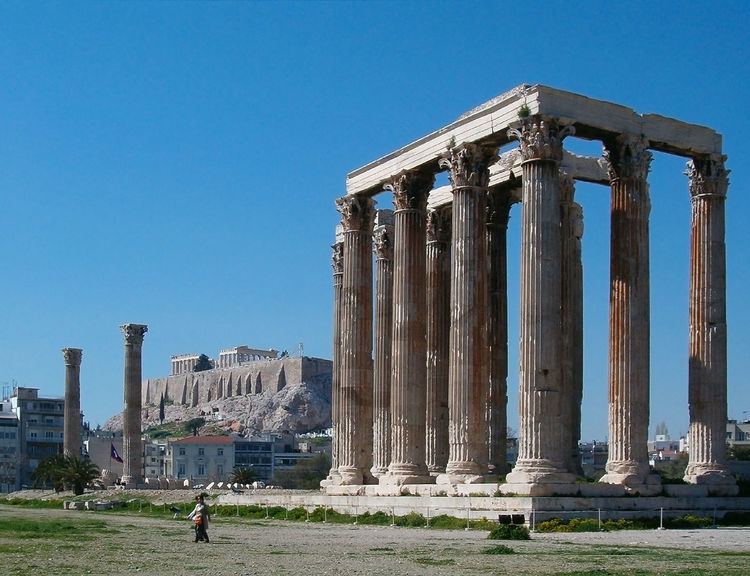 | ||
This list of ancient Greek temples covers temples built by the Hellenic people from the 6th century BC until the 2nd century AD on mainland Greece and in Hellenic towns in the Aegean Islands, Asia Minor, Sicily and Italy, wherever there were Greek colonies, and the establishment of Greek culture. Ancient Greek architecture was of very regular form, the construction being "post and lintel". There are three clearly defined styles: the Doric Order, found throughout Greece, Sicily and Italy; the Ionic Order, from Asia Minor, with examples in Greece; and the more ornate Corinthian Order, used initially only for interiors, becoming more widely used during the Hellenistic period from the 1st century BC onwards and used extensively by Roman architects.
Contents
Each ancient Greek temple was dedicated to a specific god within the pantheon and was used in part as a storehouse for votive offerings. Unlike a church, the interior space was not used as a meeting place, but held trophies and a large cult statue of the deity.
Terminology
Most ancient Greek temples were rectangular, and were approximately twice as long as they were wide, with some notable exceptions such as the enormous Temple of Olympian Zeus, Athens with a length of nearly 2 1/2 times its width. A number of surviving temple-like structures are circular, and are referred to as tholos.
The smallest temples are less than 25 metres (approx. 75 feet) in length, or in the case of the circular tholos, in diameter. The great majority of temples are between 30–60 metres (approx. 100–200 feet) in length. A small group of Doric temples, including the Parthenon, are between 60–80 metres (approx. 200–260 feet) in length. The largest temples, mainly Ionic and Corinthian, but including the Doric Temple of the Olympian Zeus, Agrigento, were between 90–120 metres (approx. 300–390 feet) in length.
The temple rises from a stepped base or "stylobate", which elevates the structure above the ground on which it stands. Early examples, such as the Temple of Zeus, Olympia, have two steps, but the majority, like the Parthenon, have three, with the exceptional example of the Temple of Apollo, Didyma, having six. The core of the building is a masonry-built "naos" within which is a cella, a windowless room originally housing the statue of the god. The cella generally has a porch or "pronaos" before it, and perhaps a second chamber or "antenaos" serving as a treasury or repository for trophies and gifts. The chambers were lit by a single large doorway, fitted with a wrought iron grill. Some rooms appear to have been illuminated by skylights.
On the stylobate, often completely surrounding the naos, stand rows of columns. Each temple is defined as being of a particular type, with two terms: one describing the number of columns across the entrance front, and the other defining their distribution.
Examples:
Note:
Precise measurements are not available for all buildings. Some have foundations that are intact and have been well surveyed so that the dimensions can be stated with accuracy. For others the size can only be estimated from scant remains. In these cases, in converting, measurements are stated to the nearest whole number. Some measurements may have been made originally in feet, converted to metres for publication, and converted back to feet for this article, with slight differences from some older publication.The list
Sorting behaviour (by column #):
- Towns' alphabetical order
- Towns by region (A-Greece, B-Turkey, C-Italy, D-Italy/Sicily)
- By coordinates
- By the deity’s name
- By date
- By area size
- By temple style (1-Doric, 2-Doric with Ionic or Corinthian elements, 3-Ionic, 4-Corinthian)
